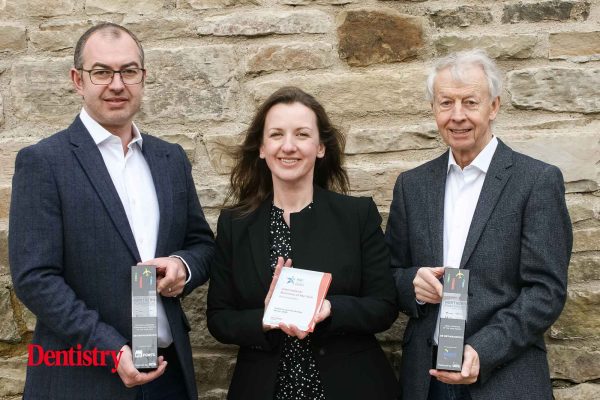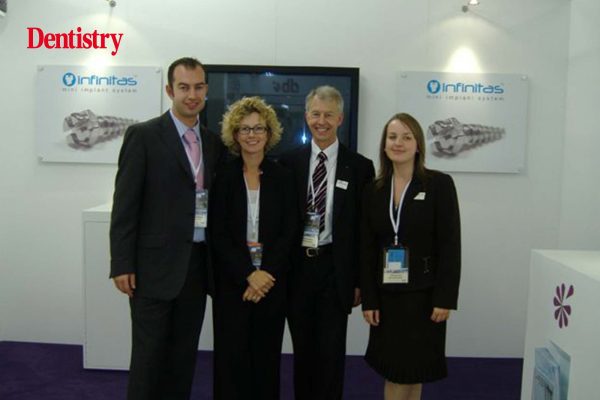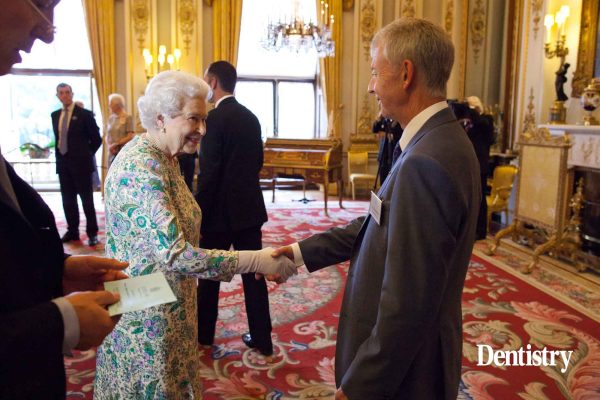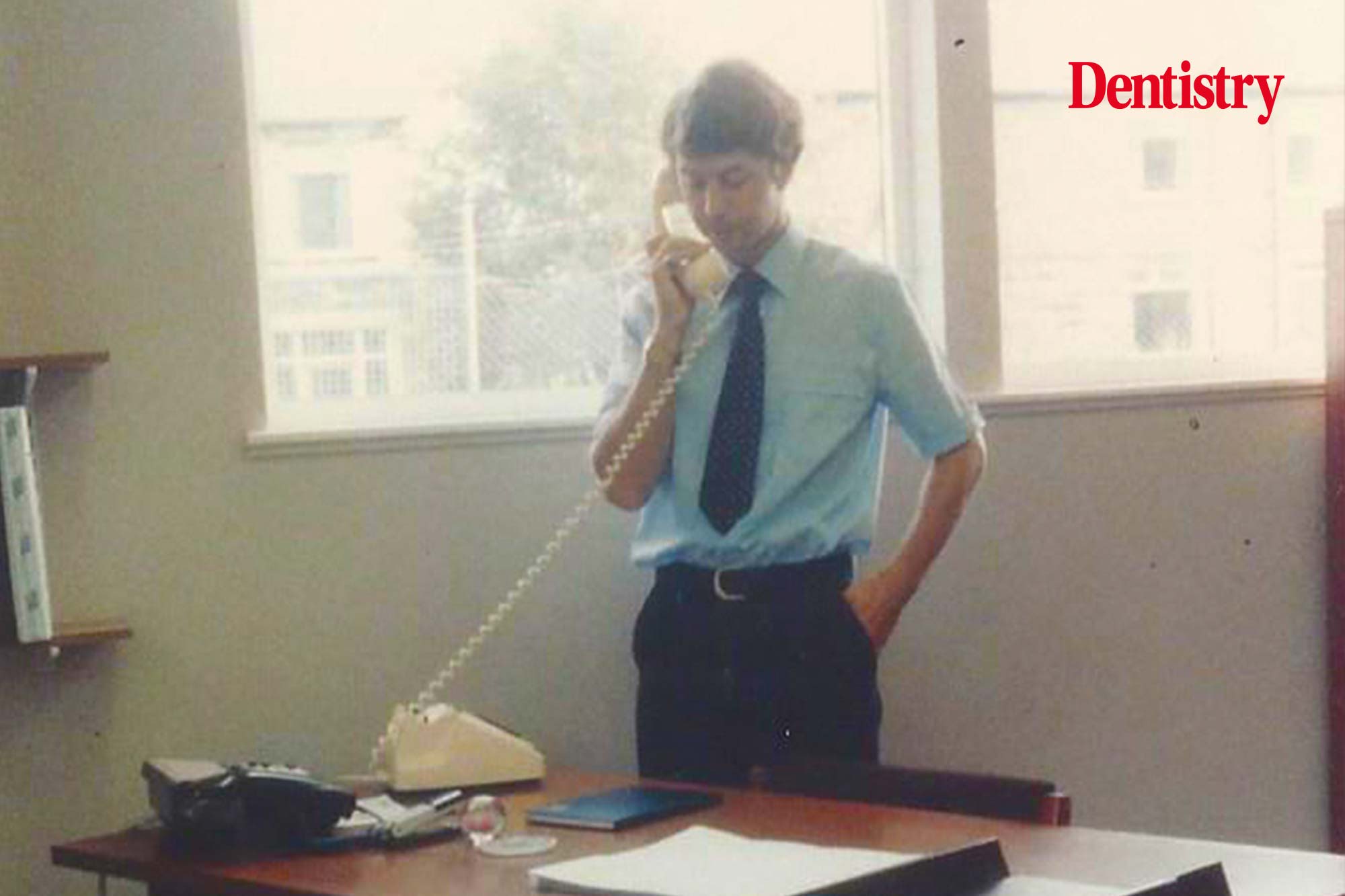 On the cusp of David Burdess’ 50th year in the dental industry, he reflects on how things have changed since he began life as an apprentice dental technician in 1961. As well as covering the events that shaped the direction of dentistry and orthodontics. And finally how three core principles led him to unimaginable success.
On the cusp of David Burdess’ 50th year in the dental industry, he reflects on how things have changed since he began life as an apprentice dental technician in 1961. As well as covering the events that shaped the direction of dentistry and orthodontics. And finally how three core principles led him to unimaginable success.
Many twists and turns have led David Burdess to where he is now. At 75, he acts as a consultant to DB Orthodontics, and is enjoying watching his directors; son Christian and daughter Victoria, lead a 45-employee strong team in developing, marketing and distributing highly coveted DB own-brand dental and orthodontic products to clinicians in over 70 countries.
DB Orthodontics is a manufacturer and provider of high quality orthodontic, dental and dental laboratory materials. It has a strong emphasis on education to complement the products.
DB Orthodontics has set a new standard with its Ixion orthodontics instruments brand. And also with its Infinitas mini implants.
Here he speaks about his 50 years in the profession.
In awe of the gold crown
When I was at school, I asked my own dentist to let me go and watch in the lab on Saturday mornings. I was fascinated.
Rows of full dentures on articulators. I was in awe of it all. I would watch the technician make a gold crown and knew this was the career for me. What a great profession to go into! I was also working in a pharmacy – counting out tablets on a Saturday.
I used to enjoy making and flying model aeroplanes. So it was natural to want to continue my practical skills into my career.
I became apprentice dental technician at Featherman and Levine in Shipley. It was a large dental practice at the time; there were five full time dentists, three full time technicians, plus me.
I went on day release to Kitson College of Engineering and Science, Leeds. And I was awarded best student several years in a row. I qualified by passing the City and Guilds Dental Technician Final Exam in 1966.
How did I get into orthodontics?
Our senior technician at Featherman and Levine went to the Eastman on a course to learn to fabricate orthodontic appliances.
He came back and showed me how to make them all. I used to copy them at lunchtimes and practice from a book. My new career pathway had begun to take shape.
A new laboratory position arose at the Bradford Royal Infirmary. A new orthodontic service was being developed to serve a large part of the Yorkshire region.
For some reason, I got the job! I was working under David Johnson, a new consultant orthodontist, who was fantastic. He gave me lots of one-to-one support.
When I had my interview, the proposed laboratory was just four walls and nothing else. I built the lab myself and stayed there for four years.
At this time, consultants offered courses for GDPs. We held many; particularly in the construction and adjustment of removable appliances. In those days, GDPs treated patients with removable appliances under the guidance of consultants. Over the years this changed, and consultants became solely focused on more complex cases using fixed appliances.
A fork in the road
In addition to my role in Bradford Royal Infirmary, I was working part-time in a maxillofacial laboratory at St Luke’s Hospital in Bradford under the leadership of the chief technician Alan Roberts. If you don’t know who Alan Roberts is Google him; what a formidable man within the industry he was!
It was at this time, two very different opportunities came my way. One was a position at Doncaster Royal Infirmary. I didn’t accept this as it would have meant leaving the area. I had just met Carol, the woman who, unbeknownst to me, would become my wife.
My other opportunity was to join the world of business. Geoff Baxter was the MD of F&H Baxter, a Bradford dental company. He asked if I would like to join his business and create an orthodontic sales department. I took this opportunity and never looked back.
Orthodontics was growing. A business friend in the know from Holland advised Geoff that orthodontics was going to become a developing part of dentistry. How right this friend was.
Around this time, there were under 200 full-time orthodontists in the country. Their focus was on complex cases only. Much orthodontic treatment back then was performed by dentists who had an interest in the area. The BSSO – The British Society for the Study of Orthodontics – was a group open to orthodontists and dentists who treated orthodontic cases throughout the year.
In 2021, the number of practising orthodontists has reached over 1,000 in the UK. With the number of orthodontic therapists now up to 593. The British Orthodontic Society has replaced the BSSO, and is a now a fully established group for all orthodontic practitioners.

I vividly remember my first day with the Baxter Group. I was given a desk opposite Geoff Baxter with a phone and a notebook. My sales training was limited and very basic by today’s standard.
I was taken out for a day by my long-term friend, David Butterfield. He also became influential in areas of dentistry such as adhesives and tooth whitening.
We visited dentists in the Leeds area. I also spent half a day visiting Leeds dental school. Further training was on the job, including the Dale Carnegie sales course.
The first orthodontic conference exhibition I attended was in September 1971, organised by the BSSO. I attended this exhibition with one product; the Qualidant head positioner; developed by a senior orthodontist called Jim Gardener at Sheffield Dental School.
It was a simple device to ensure a patient’s head was always positioned in the same place for lateral oblique X-rays. The patient would lay their head down and the clinician would take a left and right X-ray.
It sold well that day!
Developing products
In development with F&H, Sheffield Dental School and an electronics company, we launched the The Vulcan Welder. This was one of the first fully dedicated orthodontic welders of its kind for clinics and laboratories. This welder became a huge success and it quickly became the most popular welder in the UK. We exported to Japan and several European countries. It was also used in Hong Kong dental school.
As developments continued, the Vulcan model evolved, becoming Vulcan 2, 3 and small JT range.
I would also visit various European countries to source high quality and much needed products missing from the UK market. And I began to present my products to orthodontists up and down the UK.
A partnership with Unitek
In early 1971, I was invited to attend an orthodontic course by Unitek. Unitek were and still are, a leading American manufacturer.
After the course, the managing director of Unitek Europe mentioned to me they were looking for a distributor in the UK. I advised Geoff that we should take on the Unitek agency for the UK and EIRE.
Shortly after acquiring Unitek, Geoff formed a separate orthodontic company – Orthomax Dental Limited. This would be all products for orthodontic and maxillofacial treatments.
Unitek gave us the full product range of everything to do with orthodontics. Plus we were also developing a portfolio of products for maxillofacial technicians.
The orthodontic service was expanding – it was an exciting time
Orthomax supported many postgraduate courses. We supplied materials to Aberdeen presented by consultant Geoffrey Wright, Dundee and Perth with consultant John Clark, Sheffield with Professor Sullivan and David Di Biase, and Reading with Keith Isaacson, Alan Tom, and John Williams to name just a few.
We also developed a bracket in conjunction with the Kingston course presented by the late Harry Orton. Orthomax and Unitek worked together to develop the Kingston bracket. It was a standard edge wise bracket with no torque and angulation.
I was the first orthodontic sales person in the UK to go out and travel to customers. I travelled all over the UK and EIRE. From Inverness to Bournemouth, visiting all regional hospitals, dental schools, specialists, orthodontists and laboratories. I met some wonderful people who welcomed me into their clinics, eager to learn about the latest products and techniques.
Many of these customers became personal friends.
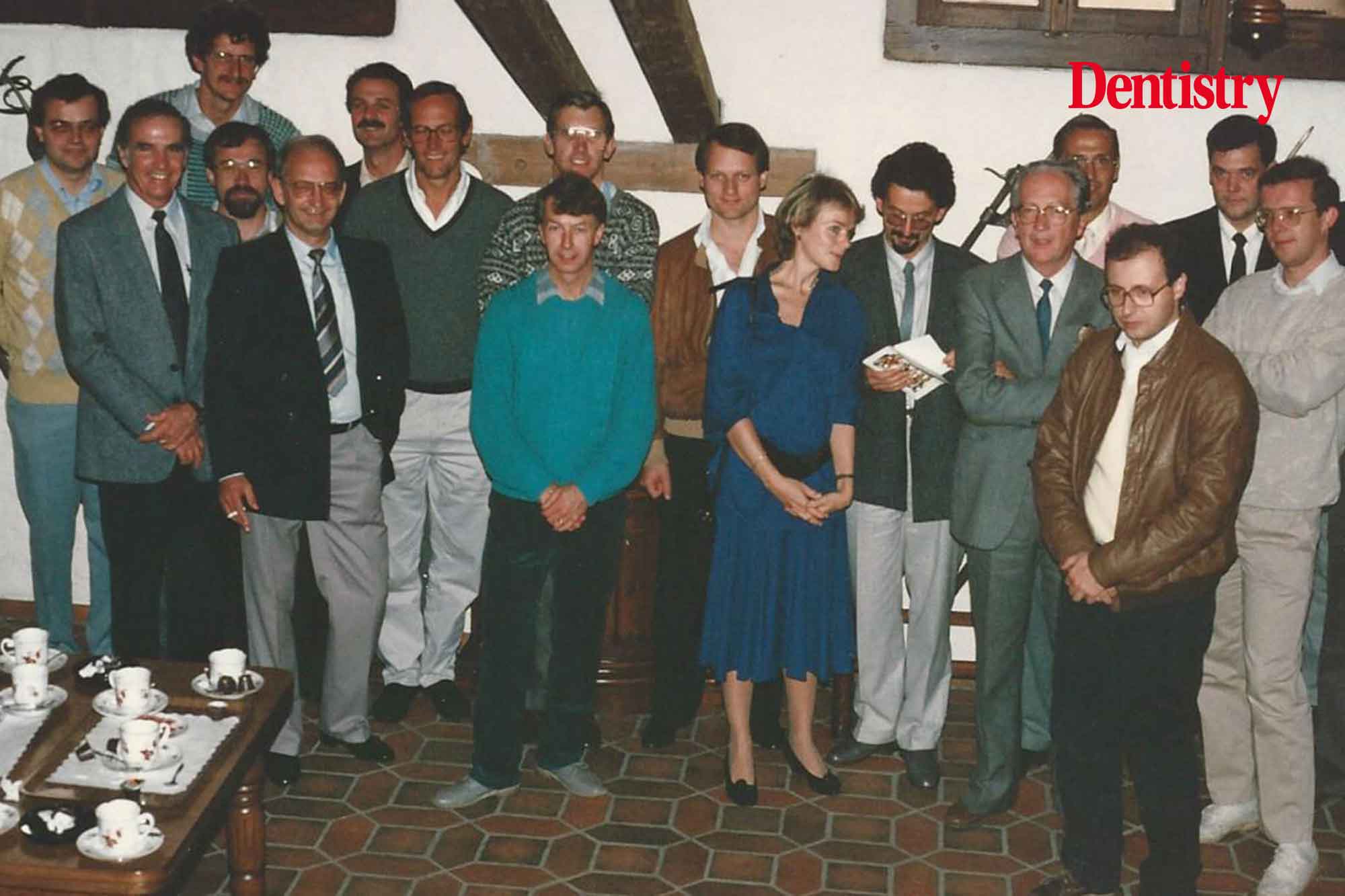
I saw many changes. Pre made orthodontic bands were just entering the market. I wanted to make clinician’s lives easier so I offered a pre-weld service with our precision welding equipment.
Clinicians could now order pre-made bands with attachments on. For a while, I still visited practices who made their own bands, in the practice, in the same appointment with the patient in the chair. The time-consuming welding of attachments would still take place.
It took me two years to convert one guy – people don’t like change!
I was very fortunate that I was able to introduce to the profession a list of products never seen before in the UK. For example, I was the first to sell pre-coated brackets for Unitek 3M.
After 23 years of success with Unitek, the Orthomax Orthodontic business was sold to 3M. I retired at 47, and this is when I then decided to set up my family business: DB Orthodontics.
The beginning of DB Orthodontics
I missed the buzz of a business. I was too young to retire so I decided to create a new business; DB Orthodontics, in 1997 with our son Christian, now marketing director.
We sold mainly wire and elastomerics. Christian worked previously at Orthomax, so he had experience in the dental industry.
When we started DB, I already had contacts all over the world, giving us a head start. In our marketing, we produced one of the first priced full colour catalogues in the orthodontic industry. That’s something we are proud of.
Soon enough, another person joined us; my sister-in-law Jane. We were definitely earning the title family business by now.
Our longest non-family serving member, Cath Wain, joined us. She previously worked for Orthomax.
We moved to a larger premises in our village – the business was growing. At these premises, we would walk through the woods to get to work and sit outside in the garden each lunchtime. It was so idyllic!
We added bracket systems and as business continued to grow, yet again our premises was too small, leading to another move to Skipton, north Yorkshire.
My daughter Shauna joined us in sales, and my sister Margaret took care of our accounts.
Whilst in Skipton, we developed the now world-renowned Ixion brand. I wanted to focus on a quality product that was missing from the orthodontic market place.
We put together a strong research and development team. This team’s purpose was to perfect the manufacturing process of several orthodontic instruments for the market. Countless hours of research, analysis and detailed inspection went into making sure the quality and functionality of these instruments was exceptional.
Our hard work delivered a collection of instruments that could cut and bend orthodontic wire more perfectly and efficiently than anything else in the world. This is why they became so successful.
Ixion instruments are now sold all over the world. When an Ixion instrument is placed in the clinician’s hand, the quality speaks for itself.
A true family business
Our daughter Victoria was the youngest of my children to join the business in 2003. We really were a true family business! There was Christian in marketing, Victoria in sales, Shauna selling on the road in the south, plus my sister Margaret in accounts.
It was the early 2000’s and mini-implants had entered the UK market.
It was at this point we were fortunate to collaborate with Dr Richard Cousley. Richard is our co-creator of the Infinitas mini-implant system; the most widely used orthodontic mini-implant in the UK, and sold in 50 countries worldwide.
Richard asked us for an easy to use mini-implant. I began my search. A Korean mini-implant brand was distributed from Germany; the biggest market for dental products in Europe. Italian brand Leone in Italy had a range also.
I went to Berlin in my search, trying to find a mini-implant I was happy to sell, and I was having difficulty. I simply couldn’t find one. The systems at the time were too complicated, with too many implants to choose from.
I made a call to a well-trusted manufacturer about producing a simplified mini-implant system to benefit orthodontists’ workflow and keep a practice inventory down.
Our partnership with Richard Cousley led to the creation of a five-implant kit. It featured a colour-coded system, accompanied by a comprehensive educational course plan that includes both hands-on and theoretical elements.
The Infinitas System can provide bone anchorage in virtually any maxillary/mandibular interproximal site and in the hard palate. Its patented head design, with external and internal undercuts, makes it versatile enough to create any form of direct and indirect anchorage.
The Infinitas Mini Implant is now the biggest selling orthodontic implant in the UK. It is also sold in many countries worldwide.
Richard Cousley is a lifelong friend of the family. We still hold regular courses for the new influx of users every year.
Queens award win
Winning awards is always a sign you are doing something right.
So, when we won the Queens Award for International Trade in 2013, we were ecstatic!
Starting out with a passion to provide only the best for orthodontics, has truly paid off. The Queen’s Award is one of the most prestigious awards in business in the UK. Just to be recognised is no mean feat.
The secret to our success
At DB, it is always about quality. What we are doing always has to be the best we can achieve – we don’t cut corners. We purely focus on offering the best. This is in everything we do.
We take our time. There is no rush to get something to the market. A culture of listening to customers is key, and we must remain sensitive and responsive to feedback.
In our company, I always look for the strengths in people and use people to the best of their ability. We hold regular huddles and monthly meetings where company information and figures are openly shared.
Our branding is also so important. The vision I had was to be fully independent of manufacturers. And we continue to still develop branded useful products for the dental and orthodontic market.
My commercial vision
- Keep products small
- Create our own brands so we can export globally
- Don’t fall into taking on other brands – you have less control.
Now, we have a full portfolio of own brand products including wires, brackets, bonding agents, alginates, photography accessories, a tooth-whitening system, a fully functioning in-house digital laboratory, and a full range of dental laboratory products.
Christian and Victoria are always looking for ways to make the orthodontist’s workflow more efficient. And, now in-line with the industry’s focus on multi-disciplinary care for the patient’s ideal outcome, aesthetic products. Tooth-whitening and photography products have opened new doors to GDPs.
Our laboratory division features our own brands such as our successful Ixion lab instruments, Iconic thermoforming materials and many other brands including the MSi anti-snoring appliance components.
We also partnered with innovative CAD/CAM brands including Hass, the makers of revolutionary lithium disilicate – Amber, Whitepeaks Zirconia and metals, and Keystone 3D printing materials.
The DB family business now includes three generations. Not only do I have my granddaughter Ella working with us in sales, we also gained a daughter-in-law Mariola; Christian’s wife, and son-in-law Simon; Victoria’s husband, all of whom have become integral to the growth of the business.
I’m fortunate
Last year may have been challenging for us and everyone else in the dental industry. Yet we managed to finish on an ecstatic high. We won three highly respected business awards: Best Small International Exporter of the Year at The Federation of Small Businesses, and Best Small Exporter and Best Overall Exporter at the Northern Powerhouse Awards.
As I celebrate my 50th year in business, we are proud to still have the same ethic and vision as we had right at the beginning.
One thing stays the same; there is always change
Orthodontics has undergone many times of change. I feel fortunate to have the privilege of introducing orthodontists to many innovative products.
From the first direct bonding adhesives, to nickel titanium wires and pre-coated brackets. Clinicians now use these products every day without a second thought. Yet they were once considered revolutionary.
I have worked with some of the most skilled people the orthodontic world has to offer in developing products. And today, I am happy to say DB Orthodontics is still spreading the word on what’s new, and what’s relevant. Today, the digital technology we have at our fingertips is creating even more opportunities for an improved workflow, enhanced patient experience and effective results.
Throughout this changing landscape, it remains my passion to focus on what truly benefits orthodontists worldwide.
By only offering the highest quality products, I hope we can make a positive impact on clinicians’ working practice. And in turn, help to transform every patients’ health and wellbeing – safely and effectively.



